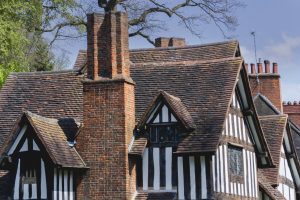Chimneys and their liners – The Victorian Era
Part 3. Chimneys and their liners – The Victorian catastrophe
This is the third episode in our article on chimneys and their liners. The first and second dealt with the older inglenooks and the Georgian style chimneys, and we touched on the Victorians and their basic points. In this article (and possibly the next) we will look at what it was that the Victorians did that caused so many problems for the modern day owner of their houses in terms of their chimneys and their liners. Remember that in the context of chimneys, Victorian refers to the method of construction which was finally outlawed in 1965, which shows just how long it took for a bad idea to die.
Consult a Certified Chimney Sweep
The other point I always make is that you should always use a certified chimney sweep. Such a chimney sweep will not just be good at his job, he will also have an excellent knowledge base, so if you are heir to any of the problems we illustrate here you can discuss it with him.
The Big Victorian Problem – CEMENT
What was it that the Victorians did with the chimneys and their liners that really set the rot into all the chimneys they built? The answer is very simple. They used cement.
Now at first sight this is just silly. Cement is a fine substance, and has been in use for thousands of years. The Romans for example built the Pantheon in Rome out of concrete, no less, and that is still standing as vindication of the material and the engineering skills of the Romans. The Victorians, seeing what a versatile substance it was, decided to not just build their chimneys out of bricks held together with cement mortar, they also lined their chimneys with a layer of cement mortar called parging.
The Science Behind the Problem
Trouble is, the Victorians didn’t realise what was going to happen in their chimneys. In order to explain why this was so catastrophic, we need to open the chemistry textbook and study a few chemical reactions. I will endeavour to keep them as simple as possible, so do bear with me.
Cement is an alkali, also known as a base. The flue gases are acidic. When these two meet they react thus.
ACID + BASE > SALT + WATER
Cement is basically Calcium hydroxide, which is written thus Ca(OH)2. Where the calcium atom holds onto two hydroxide groups. When it meets an acid, e.g. sulphuric acid which is written H2 SO4, the Calcium atom goes off with the sulphate group (SO4) and the hydrogen and the OH groups turn into water.
Ca(OH)2 + H2SO4 > CaSO4 + 2H2O
You will notice that the equation has to be balanced, i.e. each side has the exact same number of atoms.
Where does the acid come from?
It comes from the process of combustion. When fuel is burned, there is a lot of water produced (from the burning of hydrogen atoms) and this makes the flue gasses very wet. When we burn carbon, we get carbon dioxide given off as a waste product and this reacts with the water to give carbonic acid. In a similar way, most fuel contains sulphur to a greater or lesser extent and when that is burnt, its oxides react with water to give sulphuric and sulphurous acids. Nitrogen in the air also burns as it passes through the fire bed, and from this we get nitric and nitrous acids.
There will also be tiny amounts of chlorine in fuel and this creates hydrochloric acid. This of course is why you are advised not to burn plastic on the fire, as some plastics contain a lot of chlorine.
This makes the flue gases a veritable witch’s kitchen of acids, guaranteed to do the maximum damage to the chimney liner, and worse, the mortar that held the chimneys together. In the next article we will go into the consequences of this acid erosion.
To recap.
- Flue gases are very acidic, and the Victorian class of chimney is very vulnerable to acid attack.
- Don’t burn plastics as this can increase acid attack and can be dangerous.
- Call in a certified chimney sweep, and don’t be afraid to ask him questions.
Check out our articles in this Chimney Lining series:
- Chimney Lining – Inglenooks
- Chimney Lining – Georgian Chimneys
- Chimneys and their liners – the Victorian Era
- Chimney Lining – Victorian Chimneys
- Chimney Lining – Acid Attack
- Chimneys – Modern Design
- Chimney Liner – Lining a Chimney
For more advice, or to book a chimney sweeping appointment please call us on 01223 964305 or email us at bookings@ablewightchimneyservices.co.uk
For further advice or assistance, contact our team today